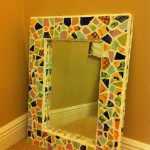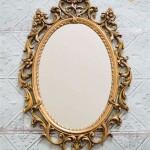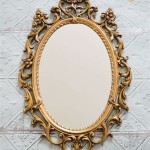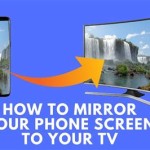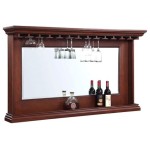Can I Mirror My Mac to Sony Bravia TV?
Mirroring a Mac screen to a Sony Bravia TV is readily achievable, offering users a larger display for presentations, entertainment, and general computing tasks. Several methods facilitate this screen mirroring, each with its own advantages and potential drawbacks.
Using AirPlay
AirPlay, Apple's proprietary wireless streaming technology, is a convenient method for mirroring a Mac display to a compatible Sony Bravia TV. Modern Bravia models often have AirPlay 2 built-in, simplifying the setup process. Users simply need to ensure both the Mac and the TV are on the same Wi-Fi network. The AirPlay icon appears in the Mac's menu bar, allowing users to select the TV as the output display. Content, including video, audio, and applications, is streamed wirelessly to the Bravia TV.
AirPlay offers a seamless user experience with minimal setup required. However, network congestion can sometimes affect performance, potentially leading to latency or reduced video quality. Also, older Macs and Bravia TVs might not support AirPlay or might require firmware updates to enable compatibility.
Connecting with an HDMI Cable
A wired connection via an HDMI cable provides a reliable and high-quality mirroring solution. This method requires an HDMI cable connected from the Mac to the HDMI port on the Sony Bravia TV. Depending on the Mac model, users might need an adapter to convert the Mac's output port (e.g., USB-C, Thunderbolt) to HDMI. After connecting the cable, users can select the TV as the display output in the Mac's display settings.
The HDMI connection ensures a stable, lag-free mirroring experience, ideal for activities requiring precise timing, such as gaming or video editing. The wired setup eliminates potential Wi-Fi interference. However, the physical cable limits mobility and requires proximity between the Mac and the TV.
Utilizing Third-Party Apps
Several third-party applications provide screen mirroring functionality for Mac to Sony Bravia TVs. These apps often utilize existing network infrastructure or create dedicated connections for streaming content. Some popular options include AirServer and Reflector. Users typically install the app on both the Mac and the TV (if supported) or use the TV's web browser to access the streaming service. The specific setup process varies depending on the chosen application.
Third-party apps can offer advanced features, such as customized streaming settings and support for older devices that lack native AirPlay compatibility. However, some apps might require subscriptions or one-time purchases. Users should research and compare different options to find the best fit for their needs.
Screen Mirroring with Chromecast
While Chromecast is primarily associated with Android devices, it can also be used to mirror a Mac screen to a Sony Bravia TV. This requires using the Chrome browser on the Mac and casting the entire desktop or a specific browser tab to the Chromecast device plugged into the TV's HDMI port. Users can access the casting feature from the Chrome browser's menu.
Chromecast offers a relatively inexpensive and easy-to-use mirroring solution. However, the quality and performance can depend on network conditions and the Mac's processing power. It might not offer the same level of seamless integration as AirPlay or a direct HDMI connection.
Troubleshooting Common Issues
Users might encounter occasional issues when mirroring their Mac to a Sony Bravia TV. Common problems include connection failures, display resolution discrepancies, and audio sync problems. Troubleshooting steps often involve verifying network connectivity, ensuring both devices are updated with the latest firmware, restarting devices, and checking cable connections if applicable. Consulting online forums and support documentation for specific models can provide further assistance in resolving issues.
Optimizing Mirroring Performance
Several factors can influence the performance of screen mirroring. A strong and stable Wi-Fi connection is crucial for wireless methods like AirPlay and Chromecast. Reducing network traffic by limiting other device activity can improve performance. Adjusting the display resolution on the Mac to match the TV's native resolution can optimize image quality and reduce latency. Closing unnecessary applications on the Mac can also free up resources and improve mirroring performance.
Choosing the Right Method
Selecting the appropriate mirroring method depends on individual needs and available equipment. AirPlay offers convenience for casual use and presentations. HDMI provides the best quality and reliability for demanding tasks. Third-party apps and Chromecast offer alternative solutions for specific scenarios, such as older devices or budget-conscious users. Considering factors such as ease of use, performance requirements, and budget constraints will guide users towards the most suitable option.

How To Mirror Mac Macbook Pro Sony Tv

How To Mirror Mac Macbook Pro Sony Tv

2024 How To Use Apple Airplay With Sony Smart Tvs

2024 How To Use Apple Airplay With Sony Smart Tvs

Screen Mirroring Mac Macbook To Sony Tv Airbeamtv

Free App How To Mirror Your Mac A Sony Tv Without Apple Screen Mirroring Bravia Etc

How To Connect Mac Samsung Smart Tv A Quick Solution

2024 How To Use Apple Airplay With Sony Smart Tvs

Screen Mirroring Mac Macbook To Sony Tv Airbeamtv

How To Airplay Sony Tv From Iphone Ipad Mac Guru

